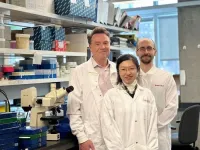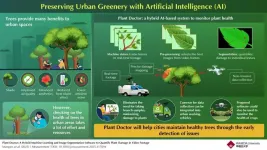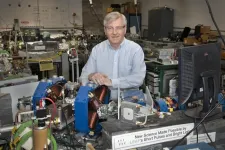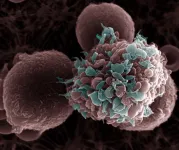NSD2 gene drives cancer cell identity in multiple myeloma
“Our findings suggest a role for NSD2 in maintaining MM cell identity, with potential implications for future therapeutic strategies based on targeting of NSD2.”
2025-04-02
(Press-News.org)
“Our findings suggest a role for NSD2 in maintaining MM cell identity, with potential implications for future therapeutic strategies based on targeting of NSD2.”
BUFFALO, NY – April 2, 2025 – A new research paper was published in Oncotarget, Volume 16, on March 21, 2025, titled “NSD2-epigenomic reprogramming and maintenance of plasma cell phenotype in t(4;14) myeloma.”
Researchers Andrea Gunnell, Scott T. Kimber, Richard Houlston, and Martin Kaiser from The Institute of Cancer Research, London, studied how a gene called NSD2 affects the behavior of multiple myeloma (MM) cells. Their findings reveal that NSD2 plays a key role in helping cancer cells retain their identity as plasma cells—white blood cells that normally help the immune system fight infections. This discovery could shape future treatment strategies for patients with a high-risk form of MM known as t(4;14) myeloma.
Multiple myeloma is a type of blood cancer that begins in plasma cells found in the bone marrow. About 20% of patients have a genetic change called t(4;14), which makes the NSD2 gene highly active. The research team compared two types of myeloma cells: one with high NSD2 activity and one where NSD2 was turned off. They found that when NSD2 is active, it changes how DNA is folded and how genes are switched on or off, especially genes that help the cells act like plasma cells. When NSD2 was turned off, important markers like CD38 were reduced, and other genes normally silent in plasma cells were activated.
The study indicated that NSD2 does not directly affect the main genes responsible for plasma cell creation. Instead, it influences many other genes that help maintain the cancer cell’s identity, which contributes to cancer growth and survival.
The researchers also observed physical changes in the cancer cells. Cells with active NSD2 looked and behaved more like typical plasma cells, while cells without NSD2 appeared more immature and lost important surface markers. These changes were linked to differences in how the DNA was organized inside the cells.
These findings are especially important as new drugs are being developed to block NSD2. The study suggests that turning off NSD2 could change how MM cells respond to existing treatments. For example, if NSD2 is blocked and CD38 levels drop, the change might affect therapies that target CD38. However, the rise of other immune-related genes might make certain immunotherapies more effective.
“Identifying the biological consequences of NSD2 over-expression in MM is not only relevant to informing new therapeutic interventions through indirect targeting of downstream effectors, but also to anticipate possible consequences of targeting NSD2 directly.”
In summary, this study shows how NSD2 helps myeloma cells keep their cancerous identity by reorganizing the DNA and influencing gene activity. Understanding this role could help researchers design better treatment approaches and possibly overcome resistance to current therapies in t(4;14) myeloma.
Continue reading: DOI: https://doi.org/10.18632/oncotarget.28706
Correspondence to: Andrea Gunnell — andrea.gunnell@icr.ac.uk
Keywords: cancer, myeloma, NSD2, t(4;14), CD38, plasma cell
Click here to sign up for free Altmetric alerts about this article.
About Oncotarget:
Oncotarget (a primarily oncology-focused, peer-reviewed, open access journal) aims to maximize research impact through insightful peer-review; eliminate borders between specialties by linking different fields of oncology, cancer research and biomedical sciences; and foster application of basic and clinical science.
Oncotarget is indexed and archived by PubMed/Medline, PubMed Central, Scopus, EMBASE, META (Chan Zuckerberg Initiative) (2018-2022), and Dimensions (Digital Science).
To learn more about Oncotarget, visit Oncotarget.com and connect with us on social media:
X
Facebook
YouTube
Instagram
LinkedIn
Pinterest
Spotify, and available wherever you listen to podcasts
Click here to subscribe to Oncotarget publication updates.
For media inquiries, please contact media@impactjournals.com.
Oncotarget Journal Office
6666 East Quaker St., Suite 1
Orchard Park, NY 14127
END
[Attachments] See images for this press release:
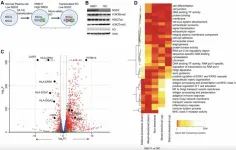
ELSE PRESS RELEASES FROM THIS DATE:
2025-04-02
NEW YORK—Thirty-two early career researchers, tackling issues from improving food security to developing better medical implants, were awarded up to two years of grant funding to pursue innovative interdisciplinary science, Schmidt Science Fellows announced today.
Now in its eighth year, the fellowship, a program of Schmidt Sciences, provides financial support for a postdoctoral placement of one to two years at a world-class research institution. The funding equips scientists to apply their knowledge to a new field of study with the goal ...
2025-04-02
Recent guidelines have restricted aspirin use in the primary prevention of cardiovascular disease. The American Heart Association (AHA)/American College of Cardiology (ACC) guidelines restricted aspirin to patients under 70, and more recently, the United States Preventive Services Task Force restricted aspirin use to patients under 60. However, heart attack and stroke risks both rise with age, leaving health care providers unsure about when to stop prescribing aspirin, whether it should be used for primary prevention, and which patients would benefit most.
Researchers from Florida Atlantic University’s ...
2025-04-02
A new study by McGill University researchers yields insights into how the disruption of calcium transport in the brain is linked to autism and intellectual disability. The findings, published in the journal Nature, not only upend a long-held belief among neuroscientists, but could pave the way for treatments.
The researchers discovered that tiny protein structures on brain cells, known as AMPA receptors, can transport calcium. While previous research had suggested that disruptions in calcium ...
2025-04-02
In Sweden, around 18,000 workers are exposed to hexavalent chromium in their workplace. Hexavalent chromium is a powerful carcinogen that is released, for example, during welding of stainless steel or the manufacture of paints and rustproofing.
Thirty years ago, the limit for hexavalent chromium in Sweden was set at 5 micrograms per cubic metre of air. It is a technically calculated value that was determined based on what industry was considered to be able to handle at the time, rather than medical studies examining the level at which people start developing ...
2025-04-02
PULLMAN, Wash. — Reflecting on how fitness posts on social media make them feel may help young women reduce the harmful tendency to compare themselves to idealized influencers and content online.
That’s according to a new study published in Health Communication that explores the impact of “fitspiration”—fitness-themed inspirational content—on young women’s body image, and whether short, daily reflections could lead to meaningful changes in their emotions and self-perception.
Led by Jessica Willoughby, associate professor of communication at Washington State University, the research found that sending young women twice-daily ...
2025-04-02
Urban trees and plants do more than just beautify city landscapes. They purify the air, reduce urban heat islands, provide recreational spaces, and even boost property values. As essential components of sustainable urban ecosystems, plants silently contribute to our well-being. However, urban trees face many threats, including pests, diseases, and climate change, making it essential to keep their health in check.
Urban greenery monitoring has traditionally been a very labor-intensive process, requiring botanical expertise and considerable resources. With cities expanding ...
2025-04-02
UPTON, N.Y. — High temperatures and ionizing radiation create extremely corrosive environments inside a nuclear reactor. To design long-lasting reactors, scientists must understand how radiation-induced chemical reactions impact structural materials. Chemists at the U.S. Department of Energy’s (DOE) Brookhaven National Laboratory and Idaho National Laboratory recently performed experiments showing that radiation-induced reactions may help mitigate the corrosion of reactor metals in a new type of reactor cooled by molten salts. Their findings are published in the journal Physical ...
2025-04-02
Danish researchers, in collaboration with the Danish Football Association, have released a White Paper that describes football as an effective recipe in the prevention and treatment of lifestyle-related diseases.
The White Paper entitled Football as Prevention and Treatment - A White Paper Focusing on 10 Non-Communicable Diseases and Risk Factors – compiles and presents research and practical experience from over 20 years of implementing recreational football training in Denmark and several other countries.
The authors also provide best practice ...
2025-04-02
Research Highlights:
New research suggests that participating in at least 150 minutes of moderate to vigorous physical activity in just two days had similar health benefits as distributing the activity throughout the week.
People who followed the “weekend warrior” approach, condensing physical activity into one or two days each week, had a significantly lower risk of death from all causes, cardiovascular disease and cancer, similar to those who engaged in activity throughout the week.
The study ...
2025-04-02
CNIO researchers discover that, in mice that eat a lot of fat, cancer cells travelling through the blood surround themselves with platelets, which act as an armor-like protection as they spread.
In addition, in animals with a fatty diet it is easier for tumor cells to 'nest' in other organs and give rise to metastasis of the primary tumor.
“These results anticipate a future in which dietary changes, together with the control of platelet activity, will complement antitumor treatments,” says Héctor Peinado, of the Spanish National Cancer Research Center (CNIO).
The study is published ...
LAST 30 PRESS RELEASES:
[Press-News.org] NSD2 gene drives cancer cell identity in multiple myeloma
“Our findings suggest a role for NSD2 in maintaining MM cell identity, with potential implications for future therapeutic strategies based on targeting of NSD2.”



